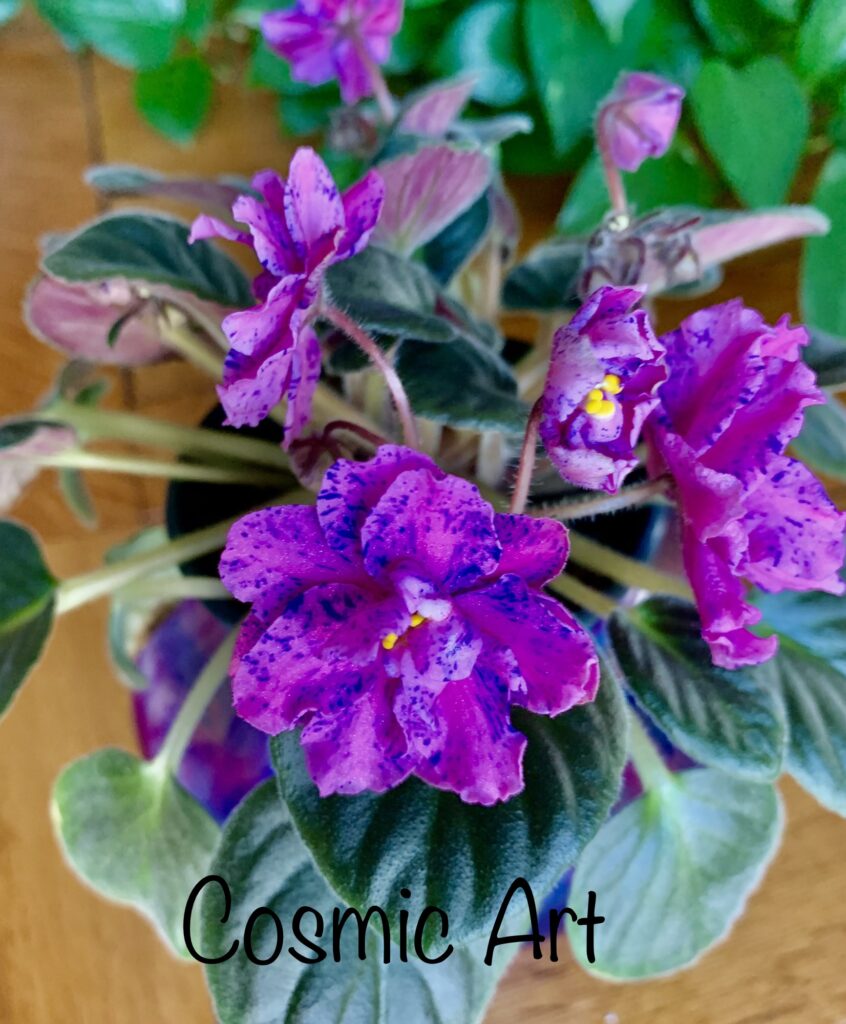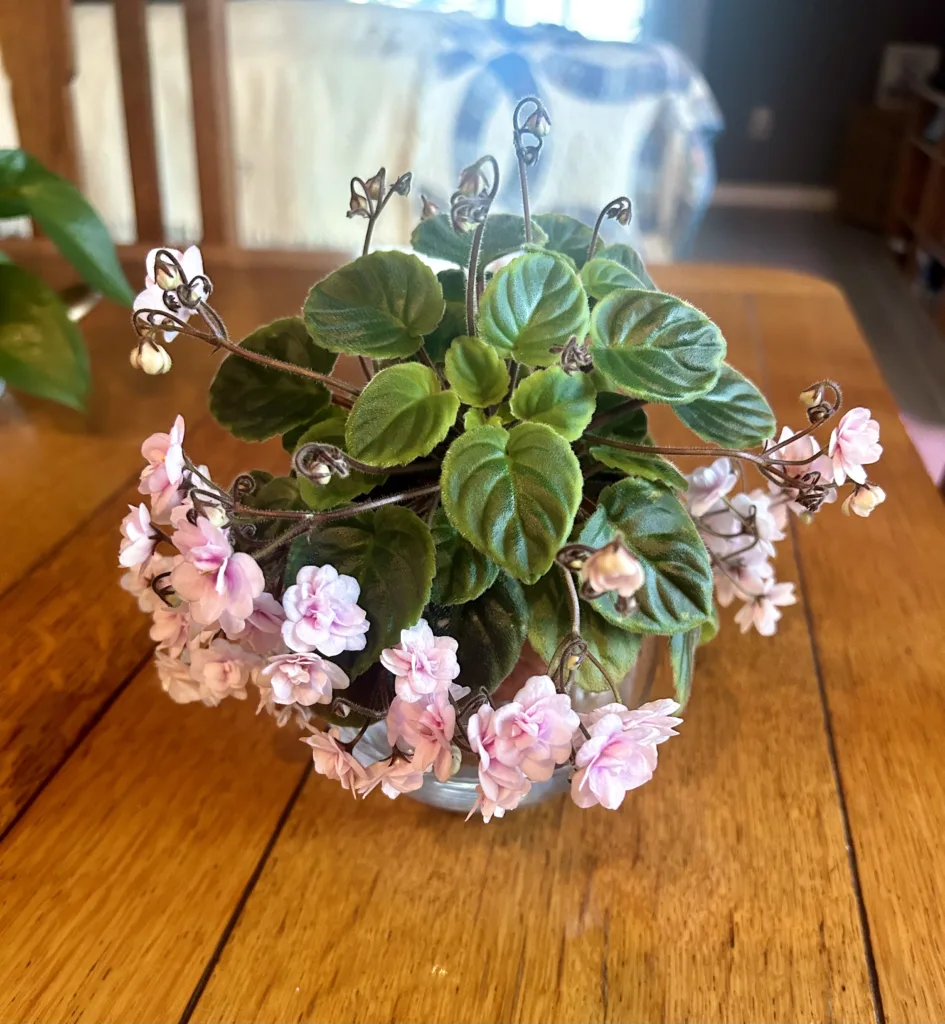
African violets are beloved for their fuzzy leaves and long-lasting blooms. However, to keep them healthy and thriving, the size of the pot you choose matters more than you might think. Unlike many houseplants that need plenty of room to spread their roots, African violets prefer to feel slightly snug in their containers. In fact, choosing the right pot size can mean the difference between a plant that flowers regularly and one that struggles. Let’s take a closer look at how big a pot should be for African violets and why it matters.
Why Pot Size Matters for African Violets
Pot size is critical for African violets because these plants have shallow root systems that grow out rather than down. If the pot is too large, the soil retains more moisture than the plant can absorb quickly, which leads to root rot. When the pot is too small, the roots become cramped, and growth slows. So, selecting a container that fits the plant’s root system just right will help ensure healthy leaves and vibrant blooms.
African violets bloom more frequently when they are slightly root-bound. This stress encourages the plant to put out flowers instead of growing more foliage. On the other hand, a pot that’s too roomy will make the plant focus on root and leaf growth, delaying or even preventing blooming.
Best Pot Size for Starter African Violets
When you’re planting a young African violet or one that has been propagated from a leaf cutting, start with a small pot. A pot that measures 2 to 2.5 inches in diameter is ideal for baby plants. These smaller containers provide the compact root space needed for the plant to grow steadily and promote early flowering.
If you use a pot that’s too large at this stage, the plant may not grow as well. Instead of focusing on leaf and flower production, the roots will spread through the excess soil. That extra soil will hold moisture longer than the roots need, which increases the risk of fungal problems and root rot.
Ideal Pot Size for Mature African Violets
For mature African violets, the best pot size is typically 1/3 the diameter of the plant’s leaf span. For example, if your African violet’s leaf spread measures 9 inches across, then a 3-inch pot is the best size. This simple rule of thumb keeps the root system appropriately contained and helps the plant continue producing abundant blooms.
It may feel counterintuitive to keep a 9-inch-wide plant in a 3-inch pot, but African violets truly do perform better when they are a little crowded. The roots will fill the pot, which triggers blooming and keeps the plant compact and tidy.
Repotting and Sizing Up Gradually
When your African violet outgrows its pot, move up only one size at a time. Jumping to a significantly larger pot can create too much space, leading to poor drainage and water retention issues. For example, if your plant is in a 3-inch pot and the roots are growing out of the drainage holes, move it to a 4-inch pot. This gradual increase helps your plant adjust and maintain proper growth habits.
Repotting every 6 to 12 months keeps the soil fresh and encourages healthy root development. Even if the plant hasn’t outgrown its pot, replacing the soil helps prevent the buildup of salts and nutrients that can damage the roots over time. During repotting, remove any lower leaves and bury the stem slightly deeper to encourage new root growth and a stronger base.
Best Pot Shapes for African Violets
The shape of the pot also plays a role in the health of African violets. Since they have shallow roots, choose a pot that is wider than it is deep. This design allows the roots to spread out evenly without sinking too deep into the soil. Shallow pots help prevent overwatering, as there’s less soil volume to hold excess moisture.
Self-watering pots with a wick system are also a great option for African violets. These pots maintain even soil moisture by drawing water up from a reservoir below. They reduce the risk of overwatering, which is one of the most common issues when growing African violets.
Plastic pots are often preferred because they hold moisture more consistently than clay or terracotta pots. However, some growers like to double pot by placing a plastic grower pot inside a decorative ceramic container. This method allows easy removal for watering and improves air circulation.
Considerations for Miniature and Standard Varieties

African violets come in miniature, semi-miniature, standard, and large varieties. Each type needs a pot that suits its size. Miniature violets, which grow up to 6 inches in leaf span, thrive in pots that are only 2 inches wide. Semi-miniatures, which grow slightly larger, usually need 2.5 to 3-inch pots.
Standard African violets, which have a leaf span of 8 to 12 inches, grow well in 4-inch pots. Large varieties that reach up to 16 inches across may need a 5-inch pot, but it’s still best to use the one-third rule based on the leaf width.
No matter the size of your African violet, avoid overpotting. Bigger isn’t better with these plants. Sticking to the right ratio keeps your plant flowering longer and growing healthier.
Using Saucers and Cachepots
While choosing the right pot size is essential, don’t forget about the accessories. African violets benefit from pots with drainage holes, so make sure any container you choose includes them. Place a saucer underneath to catch excess water and protect surfaces.
If you prefer using decorative cachepots without drainage, place a smaller plastic nursery pot inside. This way, you can remove the inner pot for watering, drain the excess, and return it to the cachepot. This setup helps avoid soggy roots and keeps your plant in great condition.
Soil and Potting Tips to Pair with the Right Pot Size
Even the perfect pot won’t help if the soil isn’t suitable. African violets need a lightweight, well-draining soil that allows air to reach the roots. Choose a mix made specifically for African violets or create your own by combining two parts peat moss, one part perlite, and one part vermiculite or two parts peat moss and two parts perlite. This blend prevents the soil from staying too wet, which is crucial in a small pot.
Always water from the bottom or use a wick system to keep the crown of the plant dry. Water on the leaves or at the center of the rosette can lead to rot or spots. Small pots dry out more quickly, so check moisture levels often and water as needed, especially during warm months or if you’re using grow lights.
Final Thoughts on Pot Size for African Violets
Choosing the right pot size for African violets is essential to their health and blooming success. Small pots encourage flowering and help prevent root rot by avoiding excess moisture. The one-third rule—selecting a pot that’s one-third the width of the plant’s leaf span—is the easiest way to choose the correct size.
As your African violet grows, increase pot size gradually, and always pair the right container with well-draining soil and good watering practices. By keeping your plant slightly root-bound and using shallow pots with proper drainage, you’ll enjoy vibrant blooms and healthy foliage throughout the year.
With the right pot size and care, African violets can thrive for decades, bringing color and charm to your home in every season.
Please be sure to check out my Gardening Blog Post Page for more tips on all types of gardening. Including Seed Saving, Seed Starting, Orchids, Water Gardening, Coldframe Gardening, Indoor Bulb Gardening, Hydroponics, Container Gardening, Mums, Herbs, African Violets, planting Bulbs, Flower Gardening, Vegetable and Fruit Gardening, Indoor Houseplants of all kinds, Bonsai, Cactus, Succulents, Hanging plants, Deer resistant plants and even Bird, Bee, Butterfly and Hummingbird Gardens!
